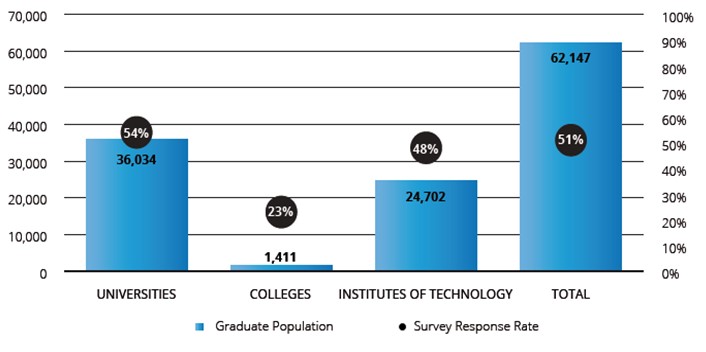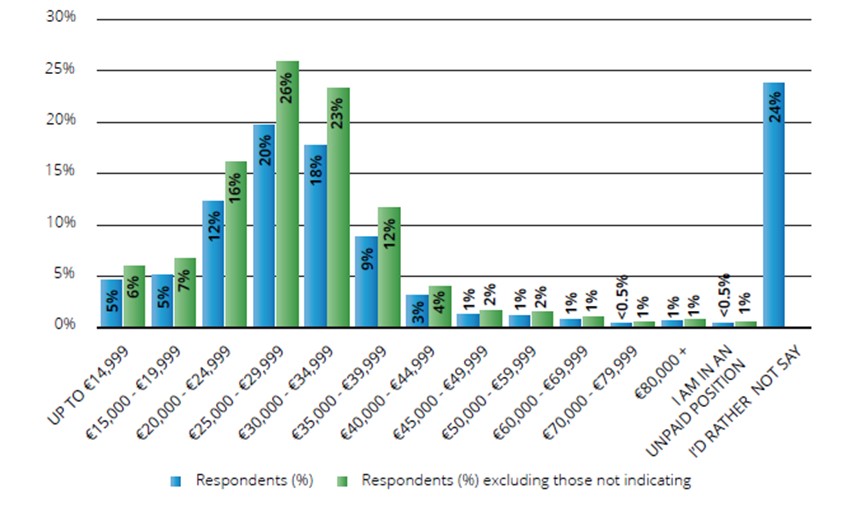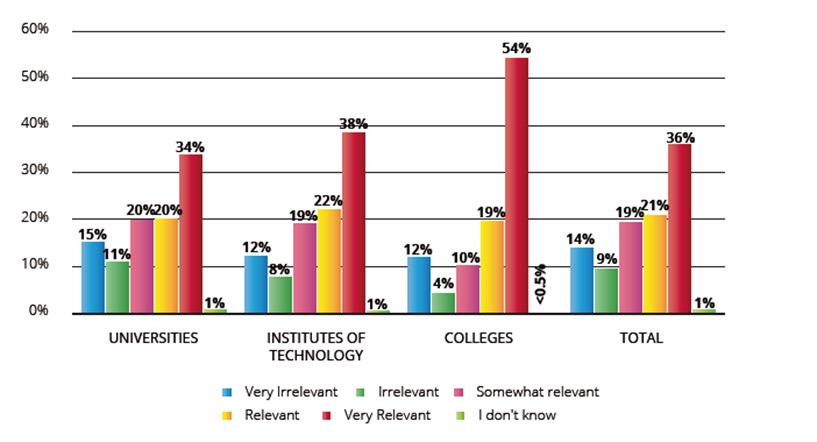
Graduate Outcomes Survey – data and results
Results from the 2019 survey (Class of 2018) can be found on this page. The national report is available for download here. On the sidebar you will find some useful infographics and spreadsheets which detail the main results from the 2019 survey (Class of 2018). If you want more general information on the survey, visit our main page.
Graduate Population
There was a total eligible graduate population of 62,147. Of these, 36,034 graduates came from universities, with a response rate of 54%. A total of 1,411 graduated from colleges, with a response rate of 23%. A further 24,702 graduated from institutes of technology, and the survey response rate was 48%.

Main Graduate Destination
Graduates of 2018 were asked what activities they were engaged in on 31st March 2019, and to indicate the single activity that was most important to them and all activities that they were
engaged in.
Considering the single activity that was most important to graduates across all surveyed populations and fields of study, there has been an increase in employment rates for graduates since the class of 2017, from 78% to 80%. Related to this, there has been a decrease in the proportion of 2018 graduates in full-time study (from 13% for 2017 graduates to 11% for 2018 graduates). Furthermore, there has been a one percentage point reduction in those unemployed and looking for work (from 5% to 4%) and a further one percentage point reduction for those engaged in another activity (from 4% to 3%).

Graduate Destination – Honours Degree Graduates by ISCED Field of Study
For honours degree graduates, those in the “Education” ISCED field of study were most likely to be in employment or due to start a job (91%), followed by Health and Welfare (85%) and ICT (85%) graduates. The honours degree graduates most likely to be in further study were from the following fields of study: Social Sciences, Journalism and Information (29%), Natural Sciences, Mathematics and Statistics (29%) and Arts and Humanities graduates (29%).

Occupation – Honours Degree by Institution Type
For honours degree graduates in employment, over half (52%) of such graduates were in professional occupations, with variation across sectors. In total, 15% of honours degree graduates were in associate professional and technical occupations and 9% were in sales and customer service occupations. As may be expected, only 4% of all honours degree graduates were managers, directors and senior officials, nine months after graduation.

Location of Employment – Honours Degree by Institution Type
In terms of location of employment for honours degree graduates, 91% were employed in Ireland and 9% were employed overseas, with a slight variation noted across sectors.

Sector – Honours Degree by Institution Type
In total, 15% of employed honours degree graduates were working in human health and social work activities, nine months after graduation. There is some notable variation across the sectors, with 18% of university, 12% of institute of technology and 1% of college graduates working in this sector. The least popular sectors included agriculture, forestry and fishing and transportation and storage, with 1% of graduates employed in each, across all sectors.

Salary – Honours Degree
While 24% would rather not say, 20% of employed honours degree graduates were earning between €25,000 and €29,999 per year. A further 18% were earning between €30,000 and €34,999. This increased to 26% and 23% respectively when those who would prefer not to say are excluded from the analysis.

Relevance of study to job – Honours Degree
Employed graduates were asked to rate the relevance of their course to their job. In total, 36% of honours degree graduates felt their course was ‘very relevant’ to their job, with the highest relevance levels report by college graduates at 54%.

More information on honours degree graduates, and other levels of study are available in the Class of 2018 report. A salary analysis, along with detailed information for teacher education and early years graduates is also included
The HEA is also engaged in collaboration with the Central Statistics Office on longitudinal graduate outcomes using administrative data. Further details are available here and a report on graduation years 2010-2014 is available for download. You can access tailor made tables using the CSO’s StatBank service.
Queries can be directed to graduatesurvey [at] hea [dot] ie. Check out our Twitter account @gradsurveyIRL too for more details.